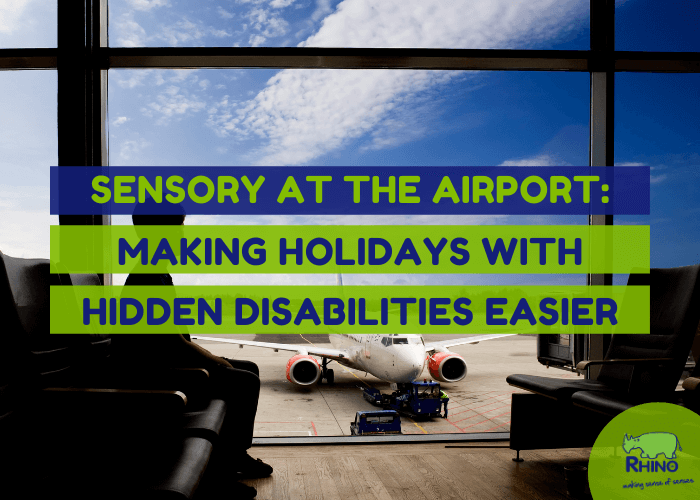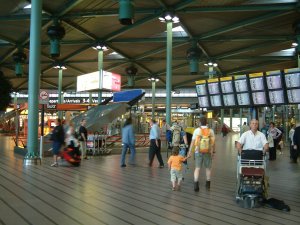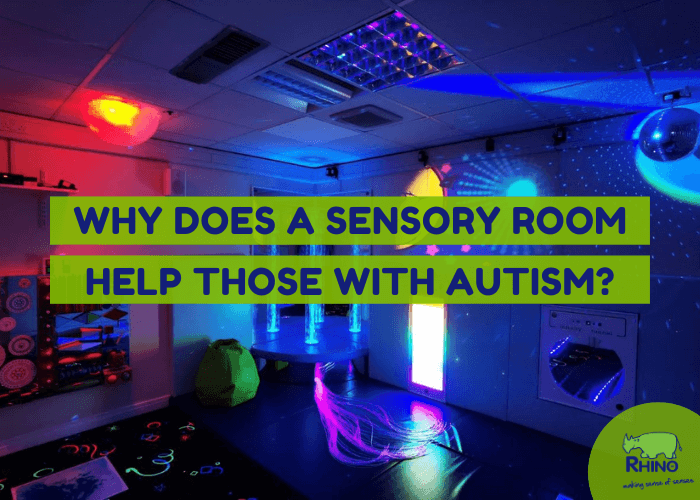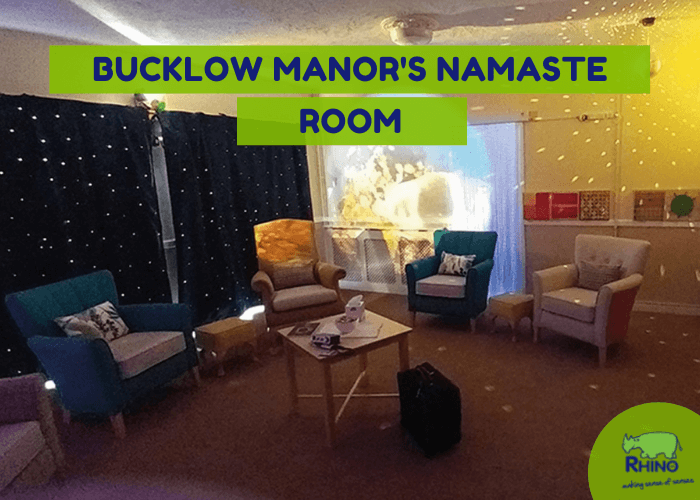The British summer is here. And at Rhino UK talk has turned to plans of holidays in the sun, but if part of your family uses sensory equipment regularly you might be starting to wonder how the journey may go?
by Jill Carson, 3min read
While it’s true that many individuals with learning disabilities or autism may find the noise, processes and crowds of the airport and the strange environment of the plane difficult to manage, there are things you can do to help.
Our advice would be to plan and prepare. Visit the airport if you can, chat with the staff and see as much as you can before entering security. I have been talking to many airports recently, making them aware of the benefits of Sensory Spaces and the positive impact they can make on their passengers with special needs and disabilities. The awareness of such needs is certainly starting to grow.
Sunflower Lanyards
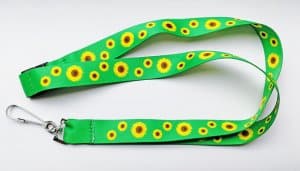
Many airports have now introduced and trained their staff to recognise the Sunflower or Hidden Disability Lanyard. These lanyards are available at your airport and are a discrete way for staff to be able to tell who may need more time, clearer directions and to stay with their family throughout the departure process too. The scheme has proved very successful, it’s not just used within transport they are available at many other locations too, including some supermarkets.
Hidden Disabilities Team
All the major airports have a Hidden Disabilities Team or an Assisted Travel Service who will have the training and knowledge to offer support. Some airports have a bypass of the Duty-Free section to avoid all the smells and sounds that someone could find overwhelming. There may be fun worksheets to colour and familiarise young people with the airport.
Some airports do have Sensory Rooms already. Those who haven’t got their own Sensory Room yet will usually have a quiet space where you can retreat to when it’s all too much, check where the nearest one on your terminal will be before you go.
When it’s time to get on the plane the boarding staff can help by explaining to the person you are caring for what will happen next and advise if you should be seated first or if you prefer, to wait until the queue is already moving in and join at the back so there is less rush. Staff awareness and the Sunflower Lanyards help to make these little things easier for everyone.
Key Benefits of Sensory Spaces in the Airport
The benefits of sensory rooms are well documented. Within an airport environment, a sensory room or even a smaller sensory space can include calming or stimulating elements of sensory lights and sounds. This can calm users, lowering their heart rate and anxiety levels, which can help them better manage the unfamiliar surroundings and activities of the airport. If they already use sensory rooms then the familiarity of the equipment will make the new experience less scary and provide relief and distraction. It is proven that sensory equipment can improve concentration and focus attention, making the user more open to the challenges ahead.
Sensory Resources
You can also use autism sensory resources when you are on the plane, look to our website for sensory resources to suit all needs and budgets. Here are a few of our favourites;
- Ear Defenders, there’s going to be lots of noise, announcements, tannoys, alarms at security and the take-off can be loud, if sensitive consider these. Ours are comfortable and sturdy, adjustable to fit from 6 months to 16 years old and fold away neatly into your hand luggage.
- Fidget Cube, is excellent at keeping hands and minds busy.
- Fidget Chews, are the ideal size for holding and the textured surfaces provide sensory input which can be very calming.
- Deep Pressure Vest, by tightly wrapping the body the pressure vest can reduce challenging behaviours and anxiety whilst steadying breathing. We have two sizes available, medium and large, fitting from around age 7 to adult, check the product description to decide which one would suit you best.
- Weighted Lap Pad or our Weighty Snakey, these items are great for stilling restless legs, arms and bodies as the deep pressure stimulates and calms nerves. Just be mindful of any weight limits for your in-cabin luggage!
To find out more or to chat to a member of the Rhino team (because we love to chat!) please do contact us on 01270 766660 or sales@dev-rhinouk.pantheonsite.io or even on our live chat Monday to Friday, 9-4.30pm.
